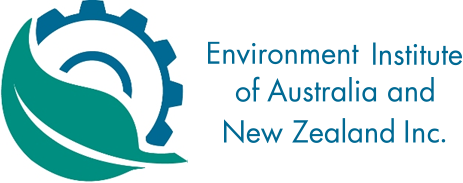-
Member Login
- Home
- About
- Institute Groups
- Australian Divisions
- New Zealand Chapter
- Special Interest Sections
- Communities of Practice
- Membership
- Events
- News & Publications
- Institute Programs
- Resources
- Jobs Board
- Contact Us
- Site Info
Impact of light pollution on turtles
 Photo: Catherine Bell
Photo: Catherine Bell
A collaborative study between researchers from Pendoley Environmental, James Cook University and the Queensland Department of Environment and Heritage Protection, investigating the impacts of artificial light at night (ALAN) on flatback turtle hatchlings in a region of substantial industrial development, was published this month in the international journal ‘Wildlife Research’.
The potential for artificial light from coastal development to disrupt natural hatchling sea-finding behaviour is well known. Turtle hatchlings are disorientated by artificial light, typically either wandering inland towards the lights or crawling along circuitous routes and taking longer to find the sea, both of which increase the chance of mortality. However, this is the first study to demonstrate a negative effect of artificial light-glow, originating from over 15 km away, on hatchling behaviour.
In previous studies*, Dr Kamrowski identified the North West Shelf in Western Australia and south-east Queensland as the two regions across Australia where marine turtles faced the greatest risk of light pollution impacts; with light in these regions being chiefly attributed to industrial development. Since Australia’s coastline is undergoing rapid industrialisation, the current study was a timely assessment of hatchling sea-finding ability at significant Queensland flatback rookeries in areas of proposed or ongoing industrial development, between 2012 and 2014.
The key finding of the study was that the sky-glow produced by large scale industrial development negatively influences flatback hatchling sea-finding ability. With continued coastal development, light pollution impacts are likely to occur at more nesting beaches around Australia, thus the critical take home message for regulators, managers and practitioners, is a call-to-arms. While current practice within government and industry is to consider the potential impact of light pollution from each development on a case-by-case basis, this study emphasises the need for rigorous lighting management that considers multiple light producers and the cumulative light glow produced. The authors strongly recommend ongoing monitoring to understand and manage the impacts of ALAN at turtle nesting beaches as industrial development continues.
For more information regarding artificial light impacts on hatchling orientation, to discuss artificial light modelling and management, or to request a copy of the article, please contact:
Dr Ruth Kamrowski |
Dr Kellie Pendoley Author and Pendoley Environmental – Director kellie.pendoley@penv.com.au |
*References
Kamrowski RL, Limpus C, Moloney J, and Hamann M (2012) Coastal light pollution and marine turtles: assessing the magnitude of the problem. Endangered Species Research 19: 85-98.
Kamrowski RL, Limpus C, Jones R, Anderson S, and Hamann M (2014) Temporal changes in artificial light exposure of marine turtle nesting areas. Global Change Biology 20: 2437-2449.
We acknowledge and value the rights and interests of Indigenous Peoples in the protection and management of environmental values through their involvement in decisions and processes, and the application of traditional Indigenous knowledge.

